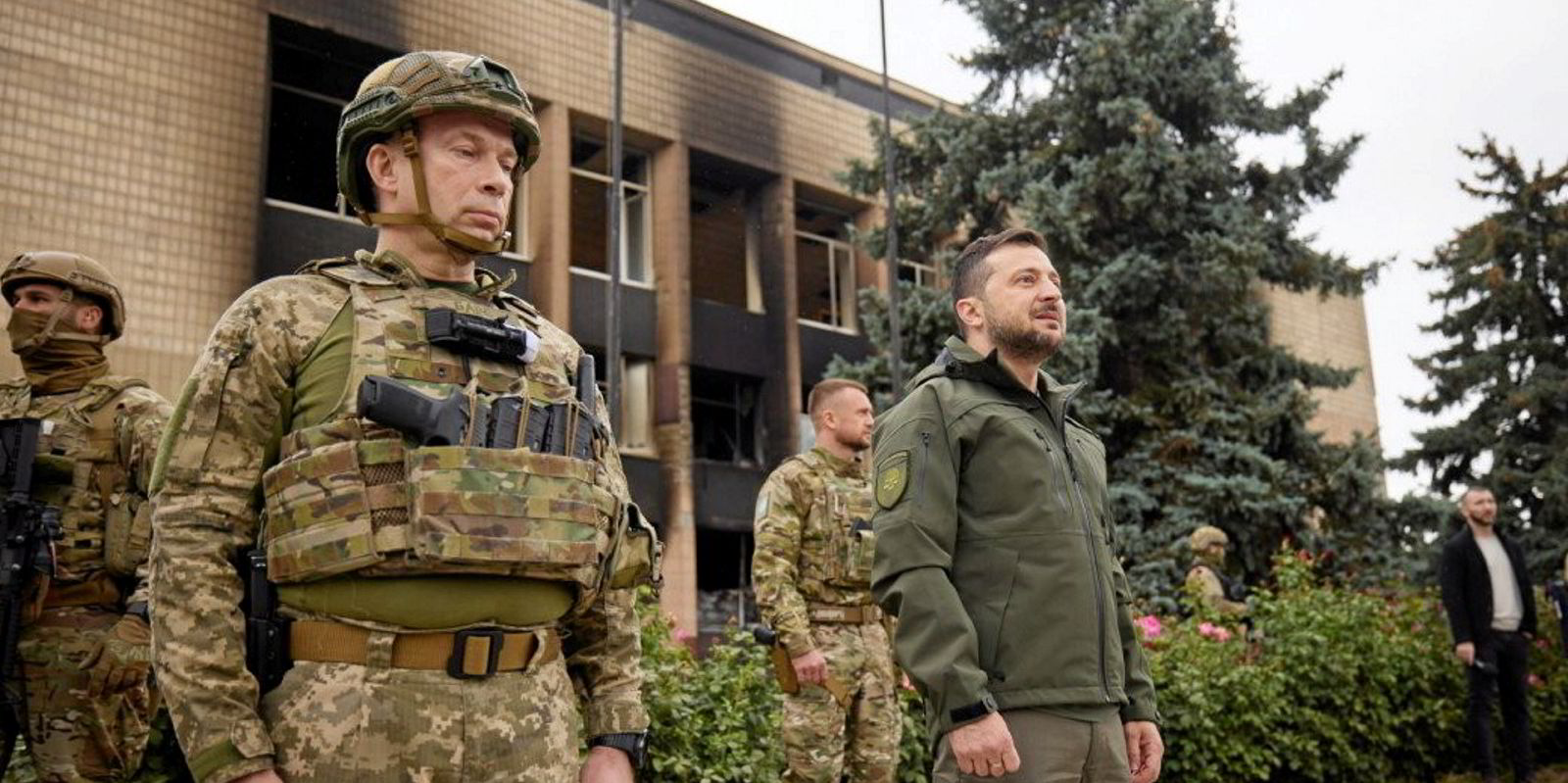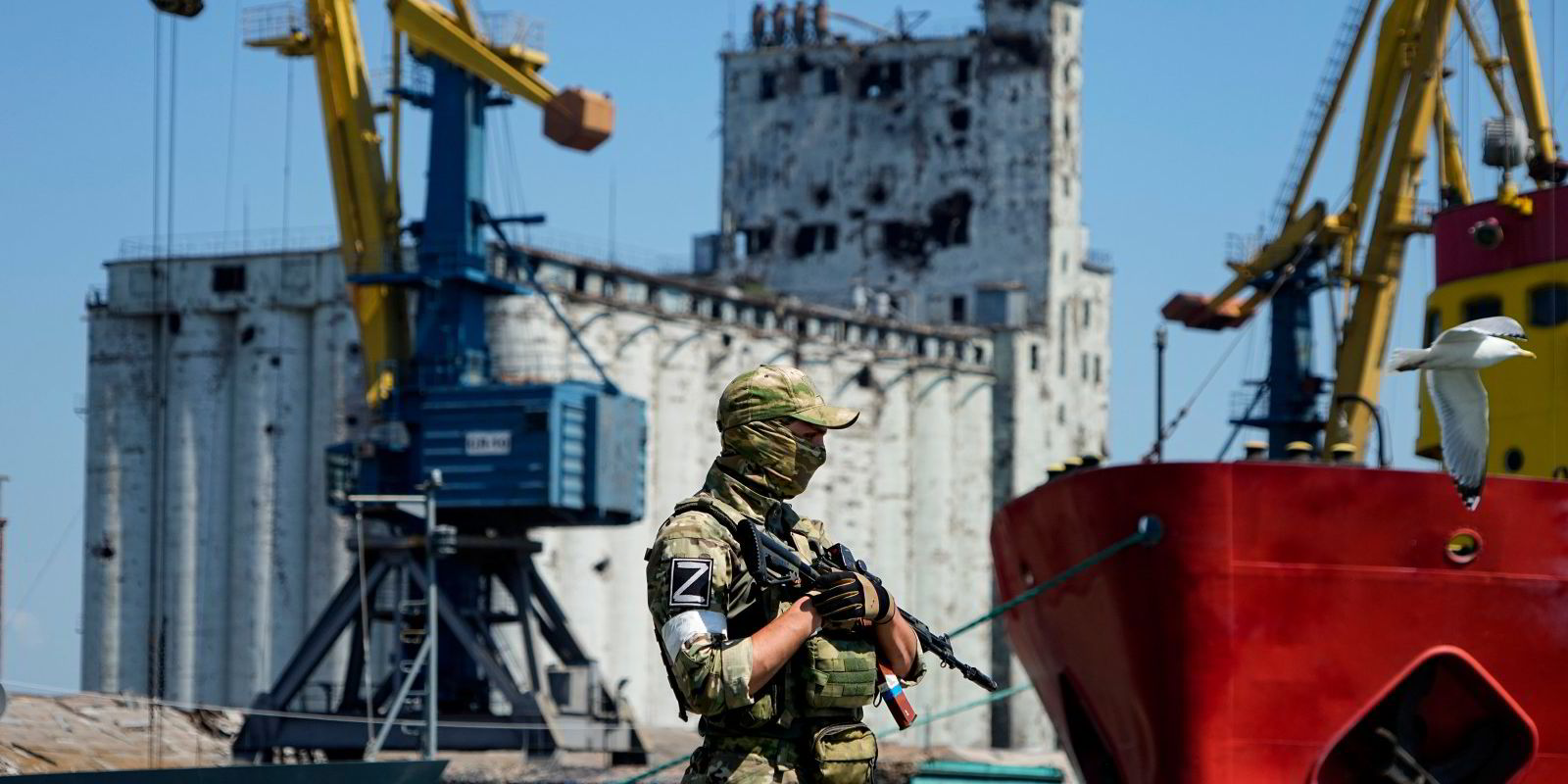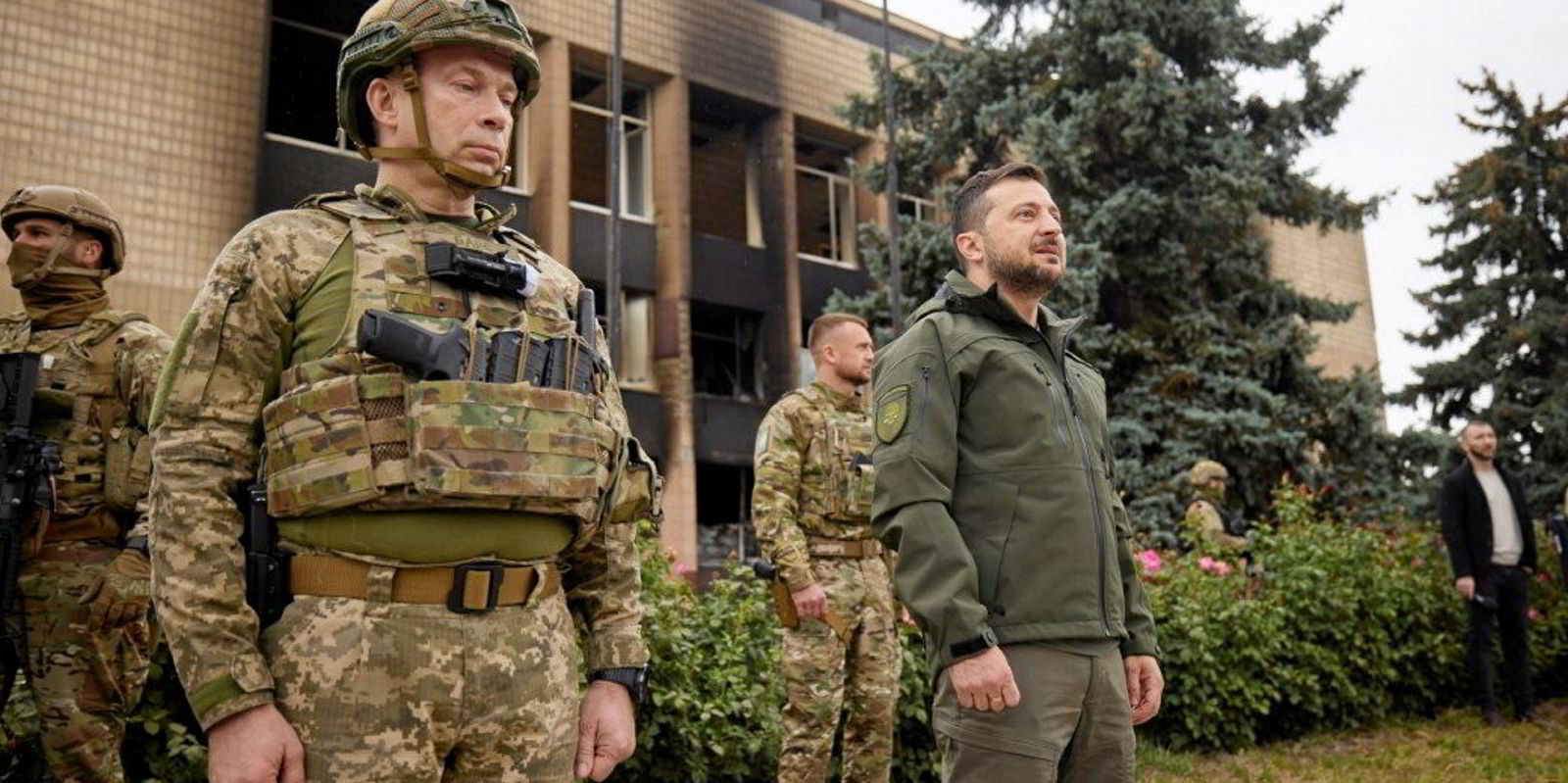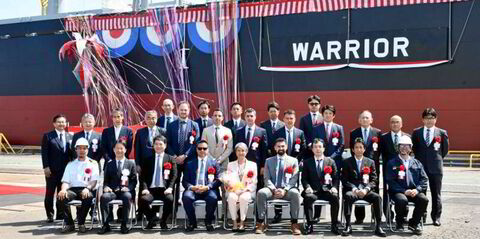Ships stranded around the east Ukrainian port of Mykolaiv are set to be the centre of war risk insurance payouts amounting to hundreds of millions of US dollars on the anniversary of Russia’s invasion.
The region has the highest concentration of ships that have remained stranded at Ukraine ports since Russian tanks rolled across the Ukraine border on 24 February last year.
The port sits right on the frontline of the battle between Ukrainian and Russian forces, which has severely restricted access and prevented ships from leaving.
It was not included in the recent United Nations’ Black Sea Grain Initiative, which has allowed other ships stranded at the ports of Odesa, Chernomorsk and Yuzhny an escape route.
War risk policies typically pay out on ships blocked or trapped in port due to war after 12 months, although some had terms that settled on an earlier six-month period.
According to AIS data, there are at least 20 ships of more than 10,000 dwt each — mostly bulkers and tankers that trade internationally — caught around Mykolaiv, with current total valuations running in excess of $200m.
Among the most valuable ships are the 20,000-dwt tanker MTM Cascais (built 2017), valued at $38.6m by VesselsValue; the 38,000-dwt tanker Harald Maersk, valued at $28.7m; and the 44,000-dwt Star Pavlina (built 2021), valued at $29.9m.
Among the most valuable ships are the 20,000-dwt tanker MTM Cascais (built 2017), valued at $38.6m by VesselsValue; the 38,000-dwt tanker Harald Maersk, valued at $28.7m; and the 44,000-dwt Star Pavlina (built 2021), valued at $29.9m.
There are some vessels still caught up in Ukraine ports that are part of the UN grain initiative, such as the 9,403-teu Joseph Schulte (ex-MSC Algeciras, built 2013) at the port of Odesa — a container ship that was ineligible to work on the UN programme — and the 178,000-dwt capesize bulk carrier Ocean Courtesy (built 2008) at the port of Yuzhny.
The Joseph Schulte is the highest-value vessel in the region, worth about $65.1m.

Most of the vessels are insured either through the commercial or the mutual war risk market.
Some suggest the reputation of the London marine market could be on the line over the claims.
“We really need to see underwriters perform on these claims,” one broker said.
Although the situation looks dire for war risk underwriters and their reinsurers, sources in the London market suggest that the losses will not be as severe as they may first appear.
Recovered losses
The war risk market has already recovered a large part of its upcoming losses through higher war risk rates.
Also, even though the vessels may be declared a constructive total loss under the terms of the war risk contract, they have been maintained throughout the crisis, are generally in good condition and are viewed as tradeable assets.
Legally, the vessels will come under the ownership of the underwriter once a payout has been made.
TradeWinds understands that “settlements” have already been made for a number of vessels, involving the resale of the ships at a heavily discounted price to market valuations. Negotiations for settlements on some vessels are still ongoing.
“The last thing an underwriter wants is to end up owning a ship that is caught up in the middle of a war,” a broker said.
Safety concerns
Concerns about the safety of these vessels have been raised by the news of attacks on ships in the Kherson region along the Dnipro River, where there are also a significant number of ships trapped — mostly smaller bulk carriers and general cargo ships.
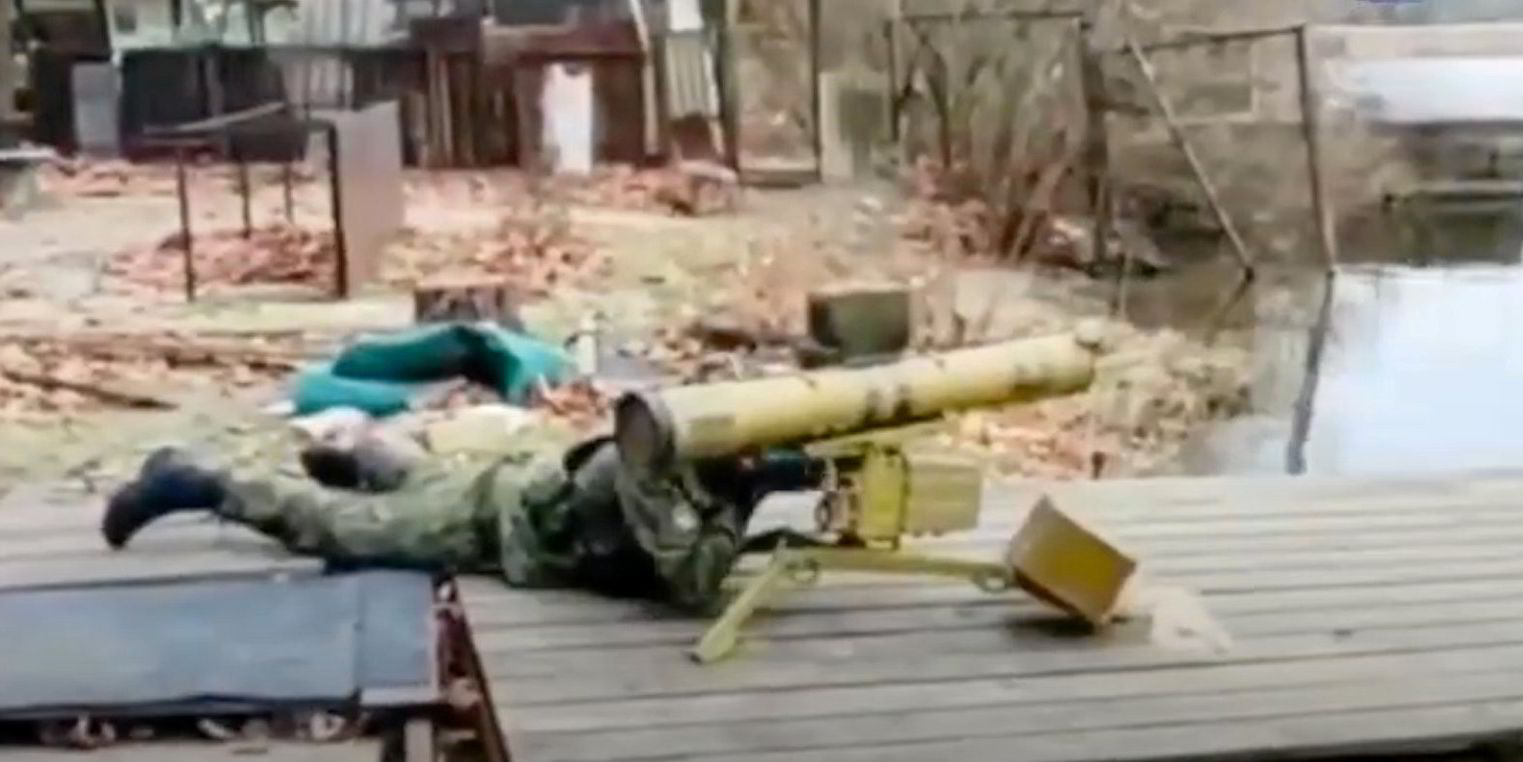
The eventual owners of the vessels remaining in the region will have to take out war risk cover against loss of the asset and potential third-party liabilities. An attack on a stranded vessel, or a prolonged period trapped in the region, could make the insurer liable for such liabilities and wreck removal.
The other issue is whether underwriters may be able to walk away from their obligations under the war risk contracts. This looks unlikely in the case of the ships at Mykolaiv.
Underwriters would have to prove that the situation of the ships does not meet the definition of blocking and trapping under war risk policy terms.
Access to Mykolaiv remains closed by the Russian occupation of Kinburn Spit — a long strip of land opposite the mainland through which access to Mykolaiv and Kherson can be controlled.
The other issue underwriters will look at is whether shipowners made sufficient effort to try to get their vessels out of the region. With the port being outside the UN grain initiative, owners have had no opportunity to escape the port.
